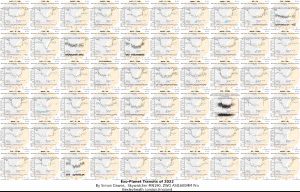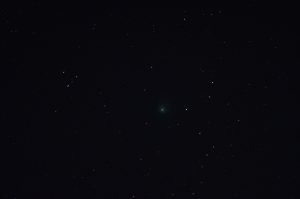
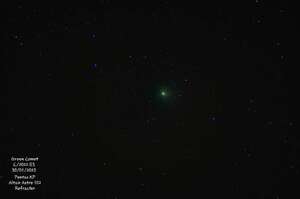
Astronomy every Thursday


A super photo of Comet C/2022 E3 (ZTF) taken on 27th Jan 2023 by Dr Mike Rushton using an eVscope.
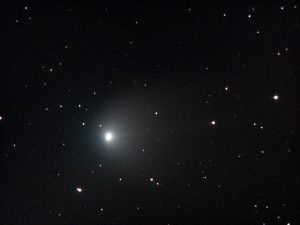
CMHASD member Honor has managed to capture Comet C/2022 E3 (ZTF) that is gracing our skies at the moment in a photo back on the 22nd Jan 2023.
Honor said ''I watched Nick James sky notes on today's BAA meeting about Comet E3 so decided to look for it. Not that easy to find but it is unmistakable as a faint fuzzy in binoculars. So I took a photo just to prove I wasn't seeing things. Worth a decent image with a telescope with more time than I had.''
The comet is the fuzzy patch centre right in the photo.
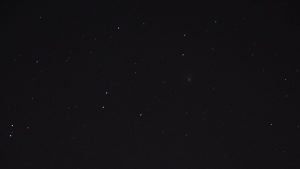
Two lovely photos taken by member Jim Burchell of the planets Jupiter & Venus on Sunday evening the 22nd Jan 2023. The photos were taken with a Pentax K70.
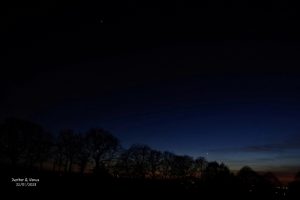
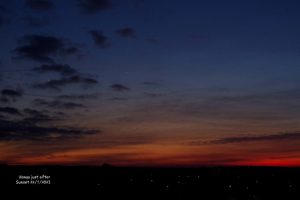
NEVER LOOK AT THE SUN DIRECTLY. Please see our Solar Observing safety page at crayfordmanorastro.com/solar-safety/
A fantastic image of the Sun taken on the morning of the 20th January 2023 by member Jim Burchell. The image was taken by Jim using a pentax KP attached to 102mm Atair Astro refractor fitted with a solar filter. At the 4 O clock position from the centre of the Sun is the large sunspot AR3190. AR3190 is one of the largest sunspots of Solar Cycle 25 so far, at almost five times the diameter of Earth.
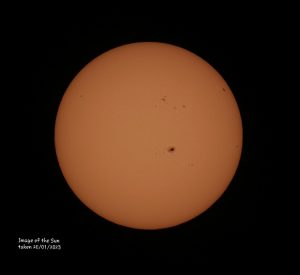
NEVER LOOK AT THE SUN DIRECTLY. Please see our Solar Observing safety page at crayfordmanorastro.com/solar-safety/
A stunning image of the Sun in H-alpha on 26th Dec 2022 by Honor Wheeler.
The image was acquired by Honor at 20221226_1212UT using a Canon M6 Mark II and Personal Solar Telescope (PST).
Honor wrote 'This image of the Sun was taken using a Coronado personal solar telescope or PST which shows the Sun's H-alpha surface features. These features include Sunspots, Filaments and Prominences. In this image there are a number of large Prominences around the edge of the Sun's disc and on the surface these can be seen as the dark Filaments snaking across the face of the Sun. The bright areas are Sunspots which are active regions which can flare brightly as you can see at the top right of the disc. Most H-alpha images that show Sunspot and Prominence detail and activity are composite images and are photographed separately then combined in editing software. In this case however, I was lucky and I managed to capture both Prominence, surface structures and activity in one single photo.'
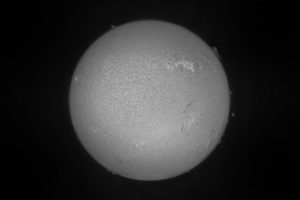
Three wonderful images of our Moon acquired by CMHASD member Honor Wheeler back in December 2022. The 1st image was taken on the 29th Dec 2022 and the next two on the 26th Dec 2022, all from North Kent.
Honor acquired her super image below of what looks like a 'Half Moon' at 20221229_2103UT by using a Canon M6 Mark II, 102mm Refractor, EQ3 synscan mount, x2 Barlow and ISO400, exp1/320s.
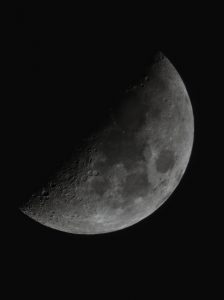
The next image below of a beautiful crescent Moon was acquired by Honor at 20221226_1654UT using a Canon M6 Mark II, 102mm Refractor, EQ3 synscan mount, x2 Barlow and ISO200, exp1/30s
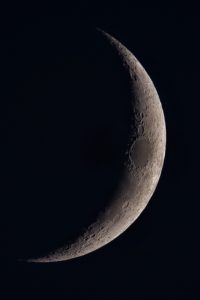
Honor's 3rd image below showing a stunning amount of Earthshine was acquired at 20221226_1737UT using a Canon M6 Mark II, 102mm Refractor, EQ3 synscan mount, x2 Barlow and ISO400, exp4s. For more information about Earthshine click here.
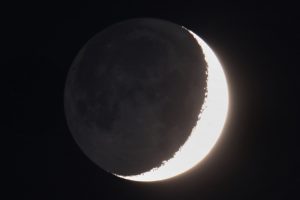
Being up early on dark mornings has its rewards as member Jim Burchell shows here with these super images of a crescent Moon on the morning of the 18th January 2023. The amount of 'Earthshine' captured in the 1st photo by Jim is stunning. Also in the photo - bottom left, is the star Alniyat in Scorpius.
''Earthshine is a dull glow which lights up the unlit part of the Moon because the Sun’s light reflects off the Earth's surface and back onto the Moon. It is also sometimes called ashen glow, the old Moon in the new Moon's arms, or the Da Vinci glow, after Leonardo da Vinci, who explained the phenomenon for the first time in recorded history...... Earthshine is best seen a few days before and after a New Moon, right after sunset or before sunrise. Scientists studying global warming found that earthshine is more intense in April and May'' ref: https://www.timeanddate.com/astronomy/earthshine.html
Crescent Moon & Earthshine with Alniyat in Scopius by Jim Burchell
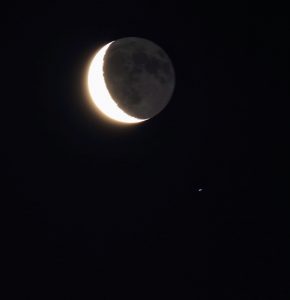
The 2nd image below shows more detail of the crescent Moon.
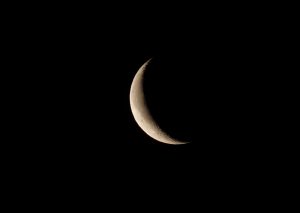
Another stunning image of the Moon taken by member Neil Webster on the 2nd January 2023. The image is of a waxing Gibbous Moon at 85.0% and 10.39 days old. The image is a mosaic made up of 6 frames stitched in Microsoft ICE.
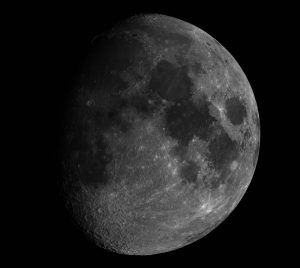
Below is one of the frames taken by Neil which he said was his favourite!
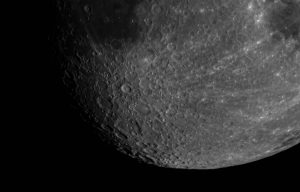
You can see a higher resolution image on Neil's flickr page at https://www.flickr.com/photos/137388222@N05/52602589747/
This is a montage of the exo-planet transits that CMHASD member and trustee Simon Dawes observed in 2022 for the ExoClock project. A total of 60 for 2022. Well done Simon!
